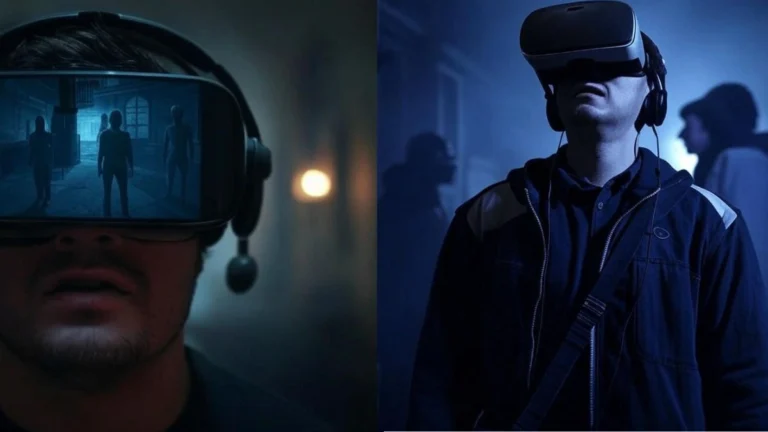Why Do Ocean Animals Look Like Aliens?
The deep sea is one of the most hostile environments on Earth—complete darkness, crushing pressure, and scarce food. To survive, creatures have developed eerie adaptations:
- Bioluminescence: Many deep-sea animals produce their own light to attract prey or mates (e.g., anglerfish).
- Gigantism & Dwarfism: Some species grow abnormally large (e.g., giant isopods) due to slow metabolisms, while others stay small to conserve energy.
- Transparent Bodies: Creatures like glass squid avoid predators by being nearly invisible.
- Nightmarish Teeth & Jaws: Food is scarce, so deep-sea predators have massive, jagged teeth to secure any meal they find.
- Elongated, Gelatinous Bodies: Without strong water pressure, some deep-sea creatures collapse when brought to the surface, appearing even more alien-like.
These adaptations make deep-sea life look like something from another planet.
1. Anglerfish (Melanocetus johnsonii)
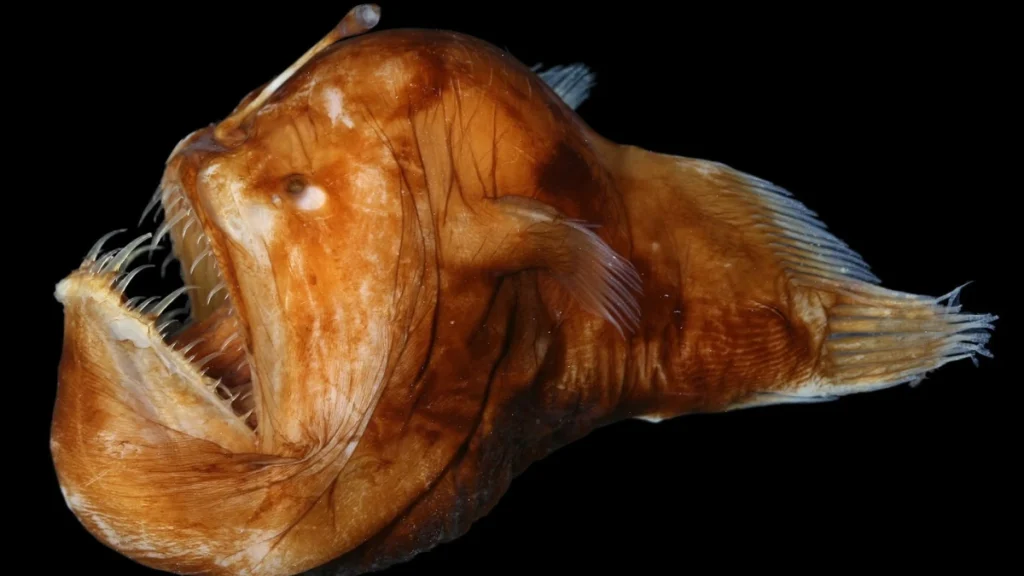
Why It Looks Alien
- Bioluminescent lure: Females possess a glowing esca (fishing rod appendage) containing bioluminescent bacteria
- Nightmarish dentition: Needle-like teeth are hinged to allow swallowing prey larger than itself
- Sexual parasitism: Tiny males permanently fuse to females, becoming nutrient-providing appendages
Biological Adaptations
- Pressure resistance: Specialized proteins prevent cellular collapse at 2,000+ psi pressures
- Energy efficiency: Slow metabolism allows survival on just a few meals per year
- Hunting strategy: Uses red bioluminescence (invisible to most deep-sea creatures) to illuminate prey
Scientific Significance
- Model organism for studying extreme sexual dimorphism
- Bioluminescence research has led to breakthroughs in genetic markers
2. Giant Isopod (Bathynomus giganteus)
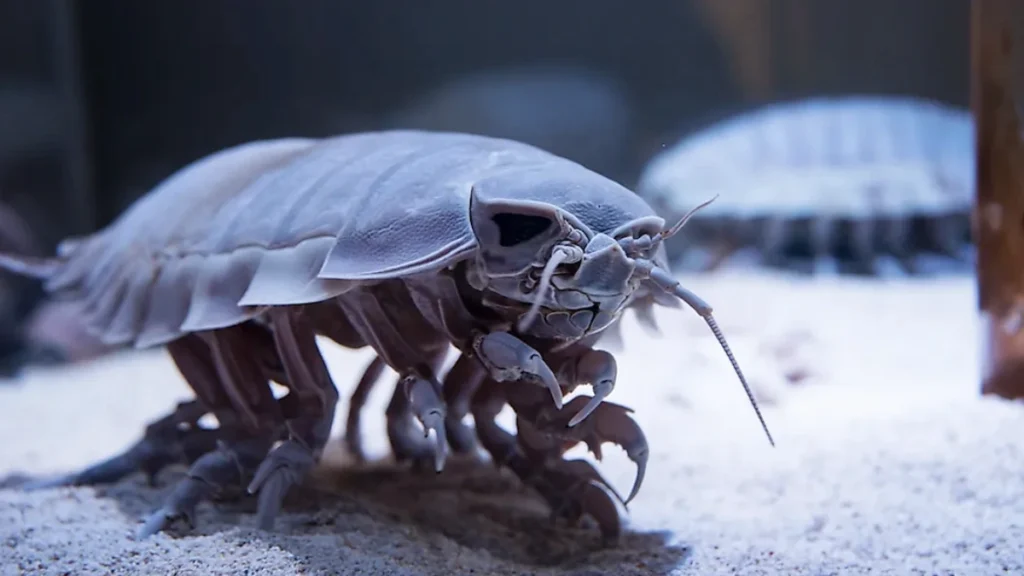
Why It Looks Alien
- Armored exoskeleton: Segmented plates resemble medieval armor
- Size anomaly: Reaches 30-40cm due to deep-sea gigantism
- Unblinking compound eyes: Reflective layers maximize light capture
Biological Adaptations
- Metabolic suspension: Can survive 5+ years without eating
- Spherical eggs: Among largest invertebrate eggs (13mm diameter)
- Rolling defense: Curls into an armored ball when threatened
Scientific Significance
- Studied for applications in suspended animation technology
- Exoskeleton structure inspires new impact-resistant materials
3. Vampire Squid (Vampyroteuthis infernalis)
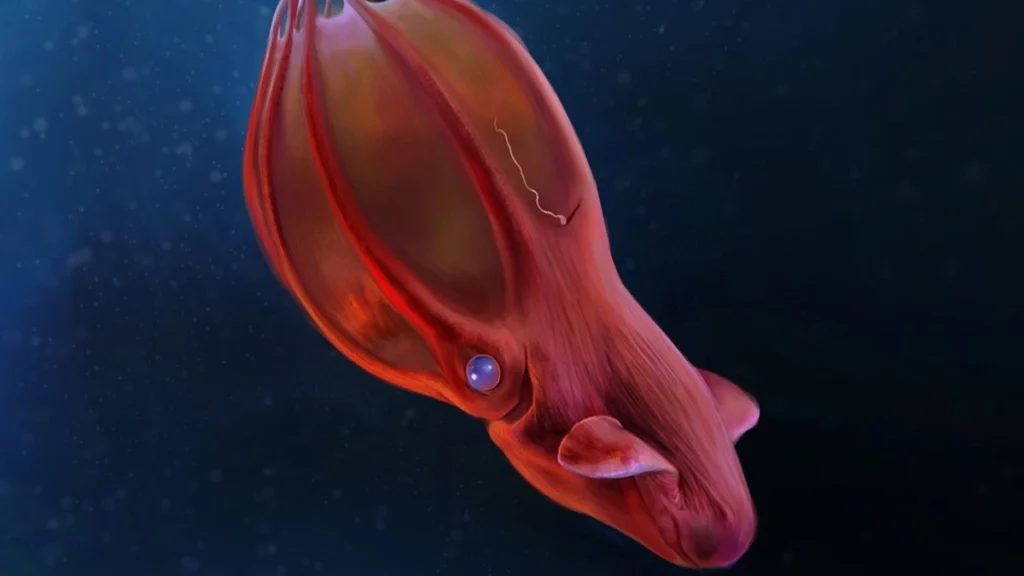
Why It Looks Alien
- Webbed arms: Connected by black skin forming a “cloak”
- Bioluminescent orbs: Light-producing organs at arm tips
- Blue blood: Hemocyanin-based circulatory system
Biological Adaptations
- Ink defense: Releases bioluminescent mucus instead of dark ink
- Low metabolism: Lowest oxygen requirement of any cephalopod
- Detachable arms: Can regenerate lost limb tips
Scientific Significance
- “Living fossil” with unchanged form for 300 million years
- Bioluminescent mucus studied for medical imaging applications
4. Frilled Shark (Chlamydoselachus anguineus)
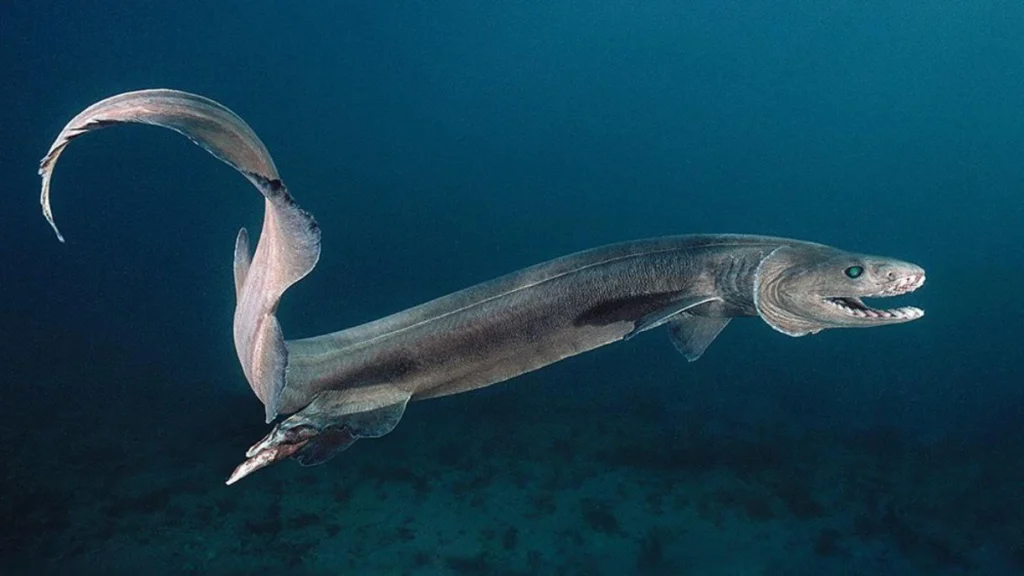
Why It Looks Alien
- Prehistoric morphology: Nearly identical to 80-million-year-old fossils
- Snake-like body: 6.5 feet long with 300 trident-shaped teeth
- Unusual gestation: 3.5 year pregnancy (longest of any vertebrate)
Biological Adaptations
- Double-hinged jaws: Can swallow prey whole like a python
- Liver buoyancy: Oil-filled liver comprises 25% of body weight
- Ambush hunting: Strikes with eel-like motion
Scientific Significance
- Model for studying “living fossil” evolutionary stasis
- Jaw mechanics inspire new robotic gripper designs
5. Black Dragonfish (Idiacanthus atlanticus)

Why It Looks Alien
- Transparent teeth: Made of crystalline enamel
- Barbel appendage: Chin-mounted bioluminescent lure
- Sexual dimorphism: Females are 40x larger than males
Biological Adaptations
- Infrared vision: Unique among vertebrates
- Photophore patterns: Species-specific light arrays
- Elastic stomach: Can consume prey 50% its body length
Scientific Significance
- Infrared detection system studied for military applications
- Tooth material inspires new transparent ceramics
6. Gulper Eel (Eurypharynx pelecanoides)
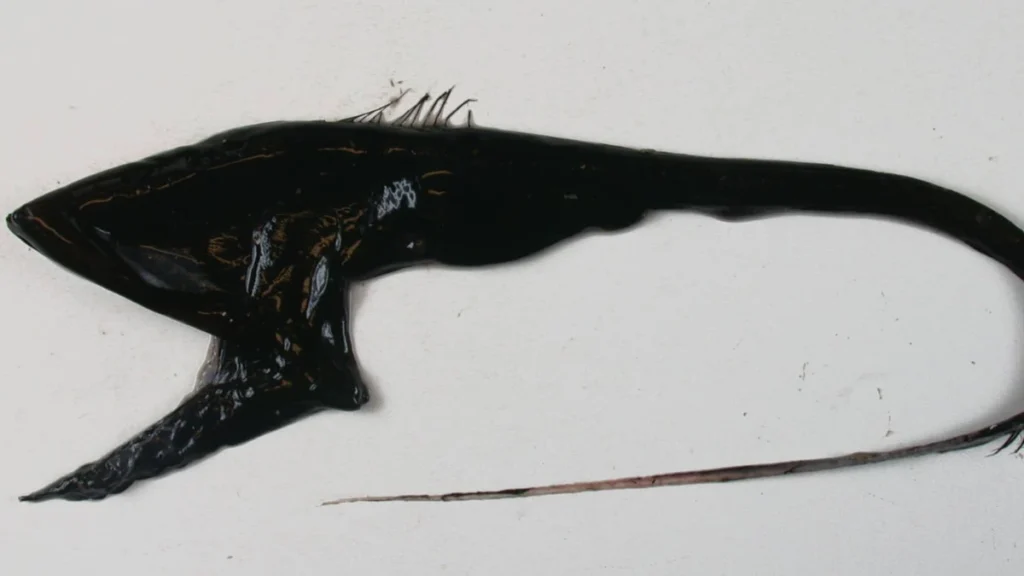
Alien Characteristics
- Expandable jaw: Mouth can open 90° to swallow prey larger than its body
- Pouch-like lower jaw: Resembles a pelican’s throat pouch (hence “pelican eel”)
- Bioluminescent tail tip: Glows pink/red to attract prey in total darkness
Biological Adaptations
- Hinged skull bones: Allow 5x expansion of mouth volume
- Stomach elasticity: Can stretch to accommodate massive meals
- Reduced musculature: Conserves energy in food-scarce environment
Scientific Significance
- Studied for applications in expandable medical devices
- Jaw mechanics inspire new designs for underwater rescue tools
7. Barreleye Fish (Macropinna microstoma)

Alien Characteristics
- Transparent dome head: Fluid-filled shield protects upward-facing eyes
- Tubular eyes: Can rotate within transparent head to look forward or upward
- Green lenses: Filter out sunlight to focus on bioluminescent prey
Biological Adaptations
- Brain case rotation: Entire nervous system rotates with eyes
- UV protection: Shield blocks harmful deep-sea radiation
- Energy-efficient vision: Retinas contain 2 types of rod cells
Scientific Significance
- Optical systems studied for new telescope designs
- Head structure inspires protective gear for extreme environments
8. Stargazer Fish (Uranoscopidae family)
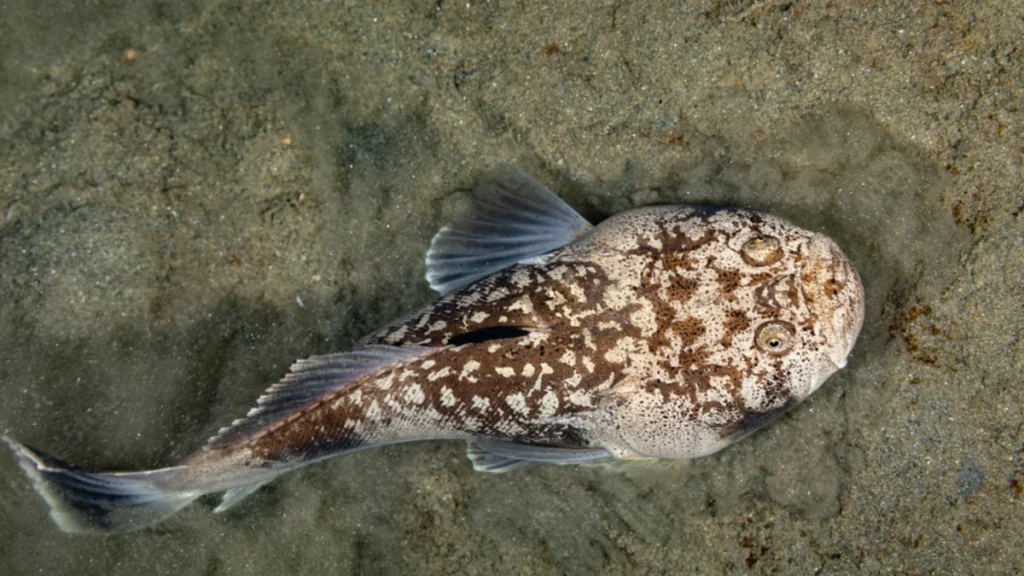
Alien Characteristics
- Upward-facing eyes: Embedded in top of skull for ambush hunting
- Electric organs: Capable of 50V discharges (some species)
- Venomous spines: Dual defense system above pectoral fins
Biological Adaptations
- Sand propulsion: Uses modified fins to “swim” through sediment
- Lure appendage: Worm-like tongue mimic to attract prey
- Negative buoyancy: Dense muscles for staying buried
Scientific Significance
- Bioelectricity research contributes to neural interface tech
- Camouflage methods studied for military applications
9. Deep-Sea Hatchetfish (Sternoptyx spp.)
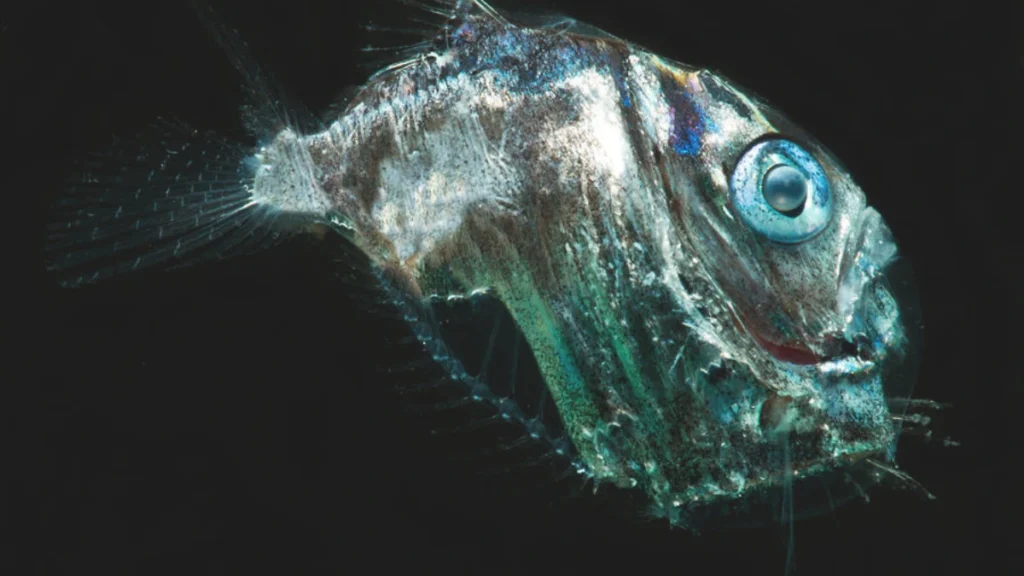
Alien Characteristics
- Mirrored sides: Reflects 90% of ambient light for camouflage
- Razor-thin profile: Laterally compressed body <5mm thick
- Dual photophores: Counter-illumination system matches downwelling light
Biological Adaptations
- Adjustable reflectivity: Crystals in scales can change orientation
- Bioluminescent gut: Masks silhouette when viewed from below
- Vertical migration: Travels 700m daily following food sources
Scientific Significance
- Light manipulation studied for new display technologies
- Migration patterns help track deep-sea nutrient flows
10. Faceless Cusk Eel (Typhlonus nasus)
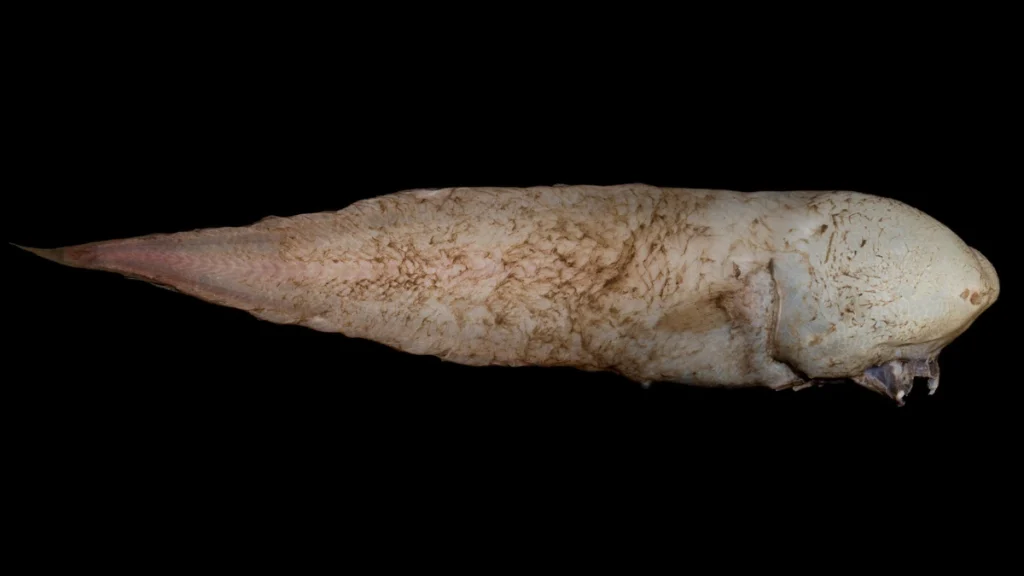
Alien Characteristics
- No visible eyes: Vestigial eyes buried beneath skin
- Protruding snout: Contains advanced electroreceptors
- Pink gelatinous body: Lacks pigmentation in perpetual darkness
Biological Adaptations
- Lateral line enhancement: 3x more neuromasts than related species
- Pressure-resistant cells: Specialized organelles prevent collapse
- Detectible pheromones: Chemical signaling in mate location
Scientific Significance
- Sensory systems inform underwater detection technology
- Pressure adaptations studied for deep-sea exploration equipment
Deep Sea Evolutionary Pressures Driving Alien Morphology
| Pressure | Adaptation | Example Species |
|---|---|---|
| Total darkness | Bioluminescence | Anglerfish |
| Extreme pressure | Gelatinous bodies | Snailfish |
| Scarce food | Expandable stomachs | Gulper eel |
| Low oxygen | Slow metabolism | Greenland shark |
| Predator avoidance | Transparency | Glass squid |
Comparative Anatomy Table
| Feature | Gulper Eel | Barreleye | Stargazer | Hatchetfish | Faceless Cusk |
|---|---|---|---|---|---|
| Eye Type | Vestigial | Tubular | Upward-facing | Normal | Absent |
| Mouth Mechanism | Expandable pouch | Small terminal | Vertical gape | Small terminal | Under-slung |
| Bioluminescence | Tail tip only | None | None | Full-body | None |
| Unique Adaptation | 90° jaw angle | Transparent dome | Electric organs | Mirror sides | Electroreception |
| Depth Range | 500-3,000m | 600-800m | 50-200m | 200-1,500m | 2,000-4,000m |
Scary Deep Sea Creatures That Look Like Aliens in JoJo’s Bizarre Adventure
Some JoJo’s Stands and creatures resemble deep-sea monsters:
- “The Deep” (Part 6): A Stand that mimics deep-sea pressure, similar to real-life abyssal conditions.
- “Diver Down” (Part 6): A Stand that phases through matter, much like how some deep-sea fish appear translucent.
- “King Crimson” (Part 5): Its eerie, biomechanical design resembles deep-sea creatures like the anglerfish.
Future Evolution Predictions (Next 50,000 Years)
- Enhanced bioluminescent communication – Complex light-based “language”
- Increased gigantism – Squids exceeding 30m in length
- Improved pressure adaptations – Collapsible skeletal structures
- New symbiotic relationships – Fish with built-in bioluminescent bacteria farms
- Advanced camouflage – Dynamic skin that mimics hydrothermal vent textures
Scientific Research Applications
- Medical: Anglerfish enzymes studied for cancer drug delivery
- Material science: Isopod exoskeletons inspire new polymers
- Robotics: Octopus arm movement replicated in soft robots
- Space research: Deep sea environments as analogs for Europa’s oceans


